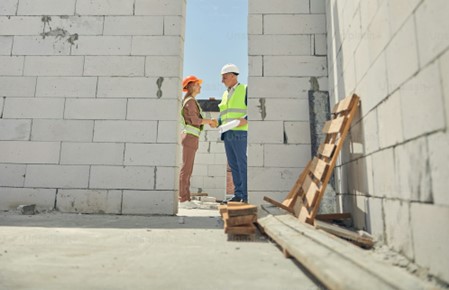
The third and final article of this series will explore the dispute resolution process after a homeowner has lodged a defective work complaint to the QBCC and the dispute has been assigned to a Resolution Services officer.
ASSESSMENT & FACILITATION
An early dispute resolution service (‘facilitation’) is offered by the QBCC if the building contract is still on foot. This will involve a Resolution Services officer contacting (via phone) both parties to discuss the complaint and, if required, seek further information or documents. The purpose of such a process is to “keep projects moving and prevent potentially lengthy and costly disagreements and delays.”[1]
SITE ACCESS
Where parties have failed to resolve issues through facilitation and there is alleged defective work, homeowners will be asked to grant reasonable access to the contractor for them to inspect and assess items in dispute. ‘Reasonable access’ is considered to be an agreed time between both parties, during normal working hours, for full consecutive days if required, provided that the contractor has given the homeowner a minimum of 48 hours’ notice.[2]
Once site access has been approved by the homeowner, both parties will meet on site for the purposes of reviewing each complaint item and formulating a plan to remedy any agreed upon items. Although the homeowner may elect to deny access, this could potentially affect the QBCC’s determination of whether the homeowner has a claim under home warranty insurance.
QBCC SITE INSPECTION FOR UNRESOLVED WORK
A QBCC Building Inspector (‘Inspector’) will be assigned to the case if defective work items are still unresolved. This means that the Inspector will conduct a visual observation of the complaint items only, i.e., it is not the QBCC’s intention to complete an inspection of the entire building or dwelling. Furthermore, invasive investigations will not be undertaken, for instance, cutting a hole to examine damage behind a wall.[3]
Therefore, the purposes of the Inspector at site inspection include:
- inspecting the items of complaint;
- assess responsibility for any defective work identified; and
- decide what subsequent action is required.
Where the Inspector has not finalised their decision at the inspection, they will contact both parties as soon as possible after the inspection.
RESOLUTION
The QBCC may direct a builder (licensed or unlicensed) to rectify building work that is defective or incomplete. This is often referred to as a direction to rectify (‘DTR’). Following QBCC’s site inspection, the Commission may issue a DTR to the contractor (and any relevant subcontractors) for defective building work. Contractors are permitted a period of 35 days to undertake rectification work and homeowners must give reasonable access to contractors for this work.
Failure to Obey a DTR: Work is Not Fixed
If the contractor does not comply with a DTR, the QBCC may enforce the following actions:
- applying up to 10 demerit points to the contractor’s licence;
- prosecution in the tribunal/courts (maximum penalty is $38,700 for an individual and $193,500 for a company);
- a penalty fine (up to $3,096);
- disciplinary action in the Queensland Civil and Administrative Tribunal (QCAT) or the courts;
- applying conditions to the contractor’s licence; or
- issuing show cause notices that may result in the suspension or cancellation of the contractor’s licence.
Finally, a person may receive a fine or be prosecuted if they delay or obstruct rectification works required by a DTR.
Lamont Project & Construction Lawyers
The Lamont Project & Construction Lawyers team has extensive knowledge dealing with the QBCC Act and the resolution process for defective work complaints. With this knowledge and expertise, Lamont Project & Construction Lawyers can provide the required support and advice during the claim cycle.
If you would like to discuss any matters raised in this article as it relates to your specific circumstances, please contact Lamont Project & Construction Lawyers.
The content of this article is for information purposes only and does not discuss every important topic or matter of law, and it is not to be relied upon as legal advice. Specialist advice should be sought regarding your specific circumstances.
Contact: Peter Lamont or Cliff Mei
Email: peter@lpclawyers.com or cliff@lpclawyers.com
Phone: (07) 3248 8500
Address: Level 2, 349 Coronation Drive, Milton Qld 4064
Postal Address: PO Box 1133, Milton Qld 4064
